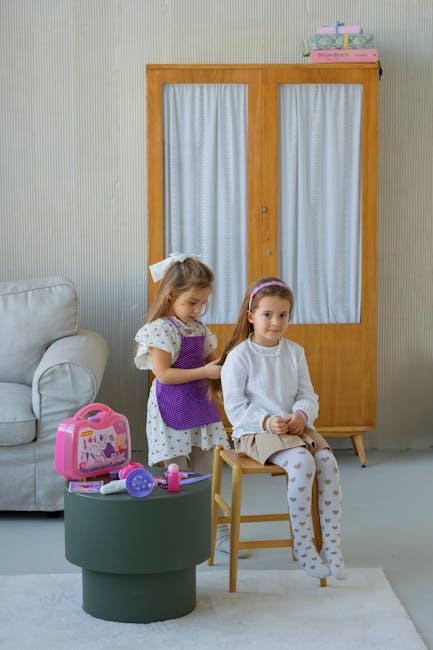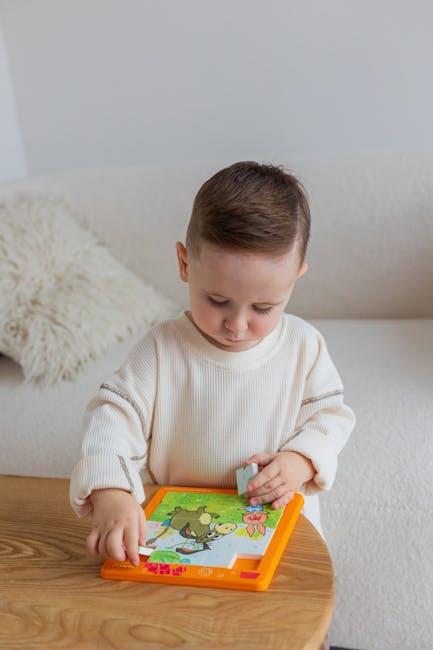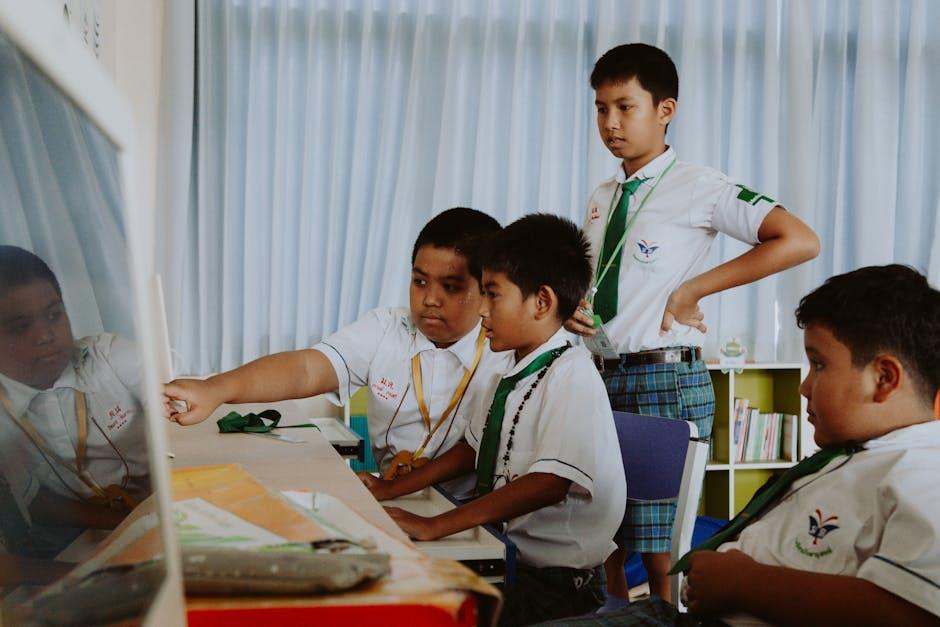In a world where screens seem to dominate every corner of childhood, finding ways to keep kids engaged without relying on digital devices can feel like a creative challenge. Yet, stepping away from the glow of screens opens a door to richer, more imaginative experiences that awaken curiosity and foster connection. This article explores practical and inspiring strategies to captivate young minds, encouraging play, learning, and interaction beyond the pixels-because sometimes, the best adventures happen offline.
Creative Play Ideas to Spark Imagination and Curiosity

Encouraging children to explore their creativity through play transforms ordinary moments into magical experiences. Consider setting up a treasure hunt where they decipher clues, fostering problem-solving and excitement. Another captivating idea is creating DIY sensory bins with rice, beans, or sand, combined with small toys or tools to stimulate tactile exploration. These activities not only entertain but also nurture critical thinking and fine motor skills, making learning seamless and fun.
Let imagination run wild by turning everyday objects into portals of discovery. Use cardboard boxes to craft spaceships, castles, or secret hideouts where stories come alive. Incorporate nature into playtime by collecting leaves, stones, and sticks to build miniature gardens or fairy villages. Here’s a quick guide to creative play setups:
| Activity | Materials Needed | Skill Developed |
|---|---|---|
| Treasure Hunt | Paper clues, small treasures | Problem-solving, observation |
| Sensory Bin | Rice, beans, toys | Tactile awareness, patience |
| Cardboard Creations | Boxes, markers, tape | Creativity, fine motor skills |
| Nature Crafts | Leaves, stones, glue | Imagination, coordination |
Building Outdoor Adventures to Encourage Physical Activity

Encouraging kids to explore the outdoors through intentional adventures helps them develop a natural love for movement and exploration. By designing playful activities such as scavenger hunts, nature trails, or backyard obstacle courses, you can turn a simple walk into an exciting journey. These experiences not only make physical activity compelling but also engage their curiosity and problem-solving skills. Plus, fresh air and sunshine elevate mood and energy levels, creating a positive feedback loop that keeps children coming back for more.
To make outdoor adventures more captivating, consider incorporating elements that appeal to different interests and abilities:
- Creative Challenges: Building forts, crafting nature art, or setting mini-quests mixed with physical tasks.
- Interactive Learning: Identifying local plants, insects, or stars during evening walks.
- Team Activities: Relay races, group scavenger hunts, or cooperative games fostering social bonds.
| Activity | Physical Focus | Engagement Tip |
|---|---|---|
| Nature Scavenger Hunt | Walking, Observation | Use themed clues for seasonal changes |
| Obstacle Course | Balance, Coordination | Involve household items for creativity |
| Evening Star Walk | Walking, Stargazing | Bring a flashlight and a simple star map |
Incorporating Hands-On Learning for Skill Development

Engaging children in activities that involve tactile interaction not only captures their attention but also nurtures essential life skills. When kids use their hands to create, build, or experiment, they develop fine motor abilities, critical thinking, and problem-solving skills in an organic way. Whether it’s making a simple craft with recycled materials or planting seeds in a garden, these hands-on experiences turn learning into an adventure. The tangible connection to their projects makes each lesson memorable and fosters a sense of accomplishment that no screen can replicate.
To encourage skill development through active participation, consider incorporating activities such as:
- DIY crafts: Encouraging creativity while improving dexterity
- Cooking together: Building math, measuring, and sequencing skills
- Building kits: Enhancing spatial awareness and patience
- Nature exploration: Developing observational and scientific reasoning
| Activity | Skills Developed | Recommended Age |
|---|---|---|
| Clay Modeling | Fine motor skills, Creativity | 4-10 years |
| Gardening | Responsibility, Patience | 5-12 years |
| Wooden Puzzles | Problem-solving, Hand-eye coordination | 3-8 years |
| Storytelling with Props | Language, Imagination | 4-9 years |
Establishing Routine Activities that Promote Consistent Engagement

Creating a predictable daily rhythm helps children feel secure and more willing to participate in activities without the lure of screens. By weaving enjoyable and varied tasks into a consistent schedule, kids begin to anticipate their favorite moments, fostering a sense of excitement and ownership over their time. Consider integrating elements like morning storytelling, midday creative crafts, and evening outdoor exploration to keep the day balanced and engaging.
To make these routines truly effective, it’s essential to keep the options fresh and stimulating. Here’s a simple framework to inspire your planning:
- Creative Time: Painting, building with blocks, or crafting simple DIY projects.
- Physical Activity: Backyard obstacle courses, nature walks, or playful yoga stretches.
- Quiet Moments: Reading books, puzzles, or listening to calming music.
- Social Play: Board games, role-playing scenarios, or group storytelling.
| Time Slot | Activity | Benefits |
|---|---|---|
| 9:00 AM | Creative Time | Boosts imagination & fine motor skills |
| 1:00 PM | Physical Activity | Enhances coordination & energy release |
| 4:00 PM | Quiet Moments | Improves concentration & calmness |
| 6:30 PM | Social Play | Encourages communication & teamwork |
Key Takeaways
As the glow of screens dims, the vibrant world of play and discovery shines ever brighter. Keeping kids engaged without screens may seem like a challenge in today’s digital age, but it’s also an invitation-to slow down, get creative, and reconnect. From imaginative storytelling and hands-on crafts to outdoor adventures and cozy family games, the possibilities are endless. By embracing these moments, we not only spark curiosity and learning but also build memories that will last far beyond any screen’s reach. So next time technology takes a backseat, watch as young minds light up with wonder, proving that engagement isn’t about pixels-it’s about presence.











